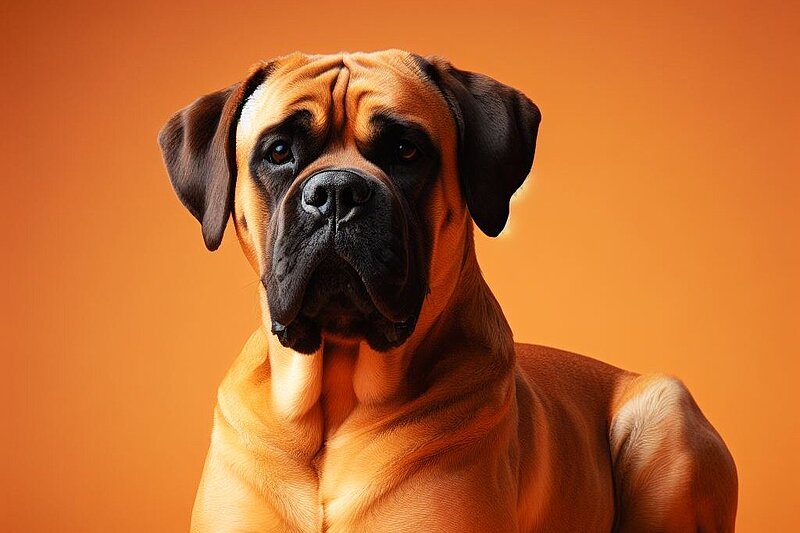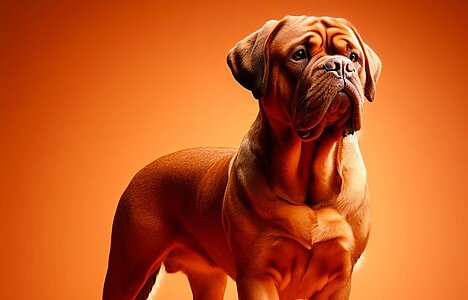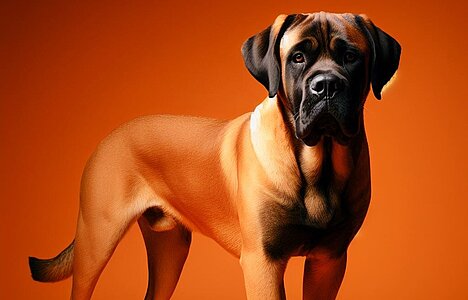The Bullmastiff: The gentle guardian with a heart of gold
The history of the Bullmastiff
The Bullmastiff has its roots in England in the 19th century, where it was used as a guard dog for gamekeepers. This breed, known as the "Gamekeeper's Night Dog", was created by crossing Mastiffs and Bulldogs in order to breed a dog that was both strong and agile enough to track down and apprehend poachers. The Bullmastiff had to be calm and fearless, which made it an ideal guard dog. The breed was officially recognized by the British Kennel Club in 1924 and has since spread worldwide.
Who is the Bullmastiff suitable for?
The Bullmastiff is ideal for families or individuals looking for a loyal, calm and protective dog. Due to its size and protective instinct, it needs a responsible owner who will provide it with consistent but loving training. The Bullmastiff is suitable for living in an apartment as long as it receives sufficient exercise and mental stimulation. However, a house with a garden is ideal.
Character and behavior
Bullmastiffs are known for their balanced and calm character. They are courageous and have a strong protective instinct, but at the same time they are also loving and loyal to their family. These dogs are patient and good with children, but should always be supervised as their size could cause accidental injury. Bullmastiffs usually get along well with other animals, especially if they are socialized early.
Appearance and physical characteristics
Bullmastiffs are large, powerfully built dogs. Males reach a shoulder height of 64 to 69 cm and weigh between 50 and 59 kg. Females are slightly smaller, with a shoulder height of 61 to 66 cm and a weight of 41 to 50 kg. Their coat is short, dense and easy to care for, typically in the colors brindle, fawn or red.
Grooming and health
Grooming a Bullmastiff is relatively easy. Their short coat only requires occasional brushing to remove loose hair and keep the coat shiny. Regular dental care, ear cleaning and claw trimming are also important. Bullmastiffs are prone to some health problems such as hip dysplasia, elbow dysplasia and gastric torsion. Regular visits to the vet and a balanced diet are crucial to minimize these risks.
Exercise needs and training requirements
Although Bullmastiffs are large dogs, they have moderate exercise requirements. Daily walks and occasional play in the garden are enough to keep them happy and healthy. Intense physical activity is not necessary, and they can adapt well to life in the city as long as they get enough exercise. Bullmastiffs benefit from structured training starting early in puppyhood. Positive reinforcement and consistent, loving leadership are the keys to a well-behaved Bullmastiff.
Behavior and interactions
Bullmastiffs are naturally gentle and patient, which makes them excellent family dogs. Their protective instincts are strong, so early socialization is important to ensure they are comfortable in a variety of situations. They are good with children, but should always be supervised. They usually get on well with other pets, especially if they have been used to them since they were young.
Recognition and interesting facts
The Bullmastiff is recognized by the Fédération Cynologique Internationale (FCI) in Group 2 (Pinschers and Schnauzers, Molossoids, Swiss Mountain and Cattle Dogs and other breeds). This breed is not only known for its loyalty and protective instinct, but also for its ability to adapt quickly to different living conditions.
Information
Country of origin
Appearance
Height at withers
Weight
Life expectancy
Breeding
FCI-Group
Standard
Section
More pictures
Similar to Bullmastiff
These dog breeds look similar to the Bullmastiff or resemble it in character.




